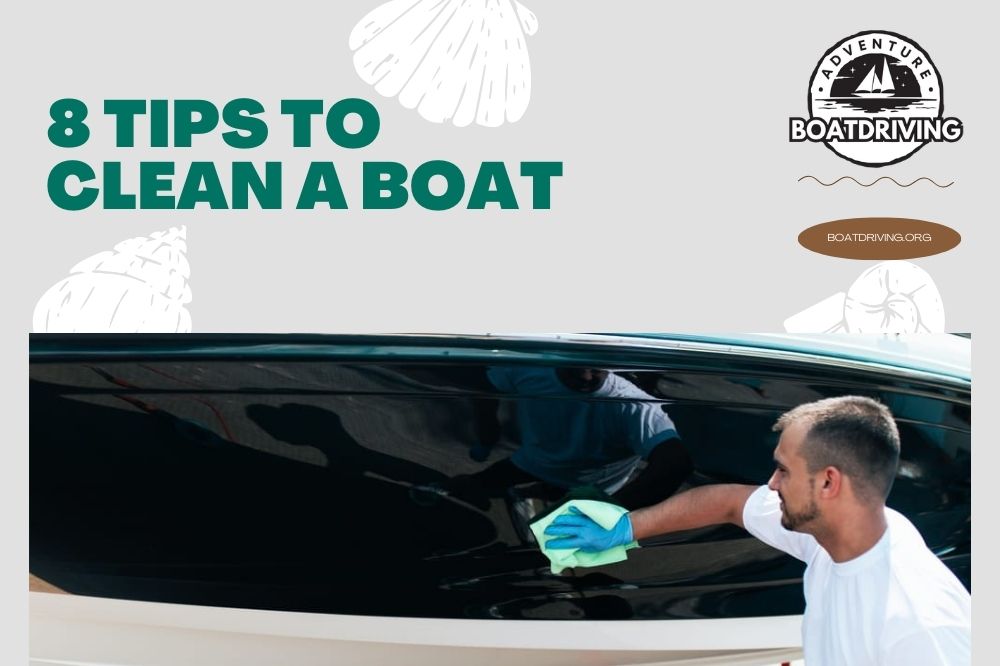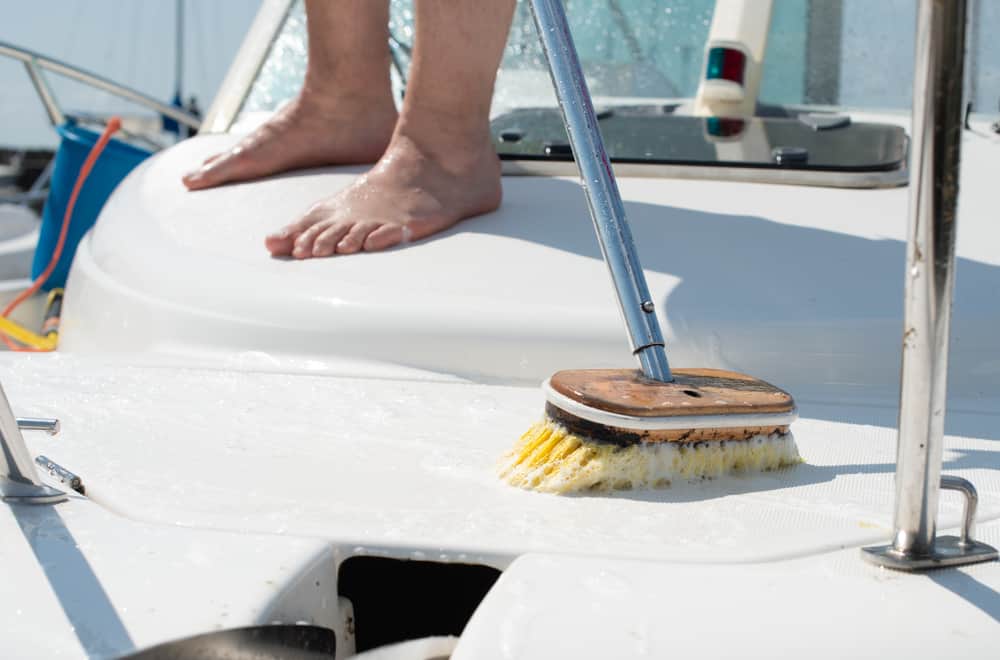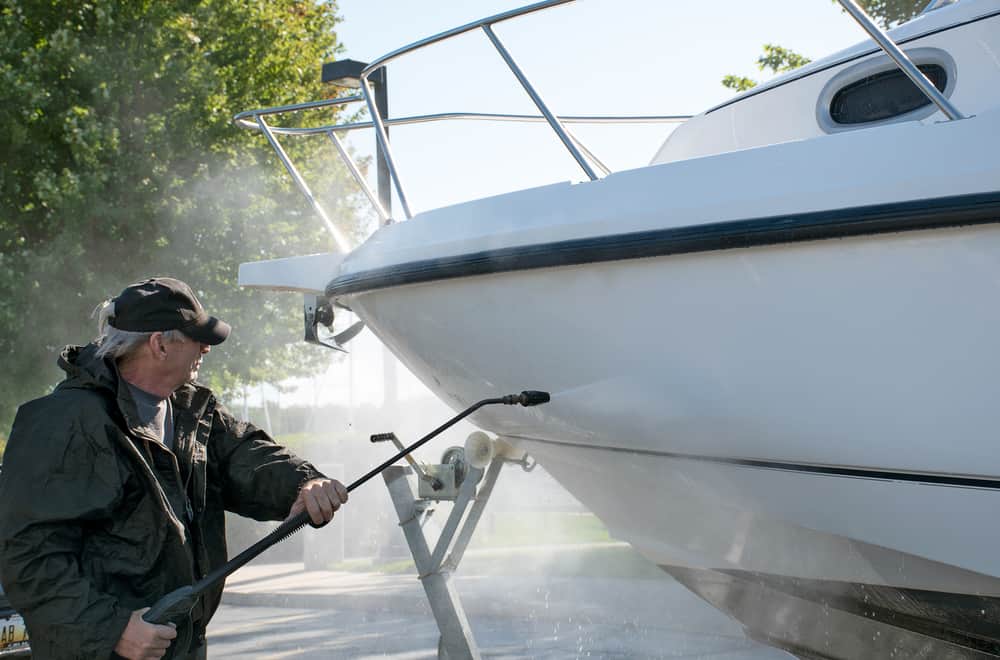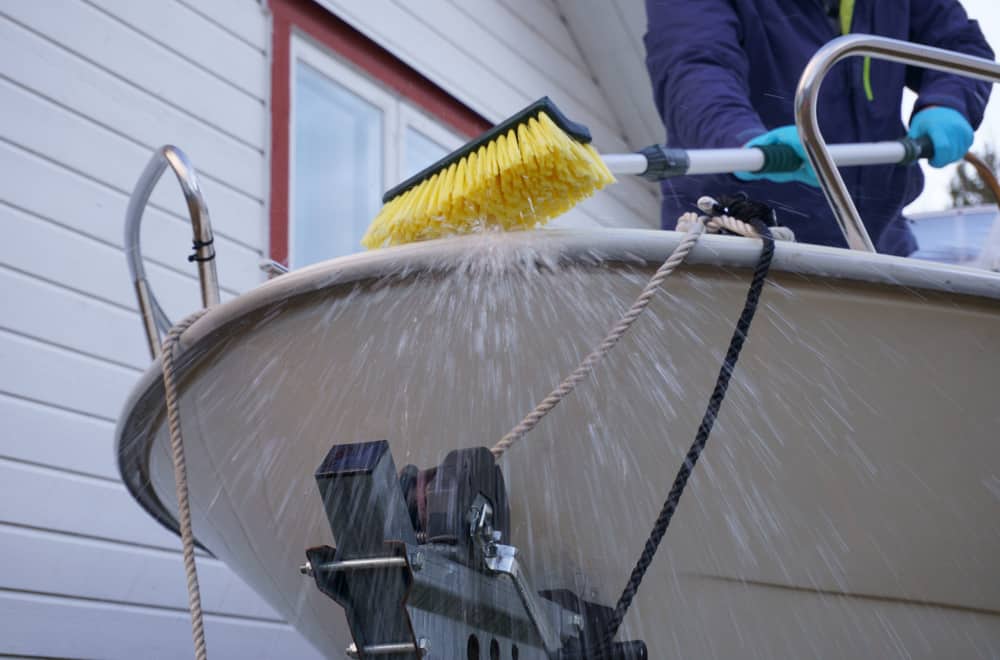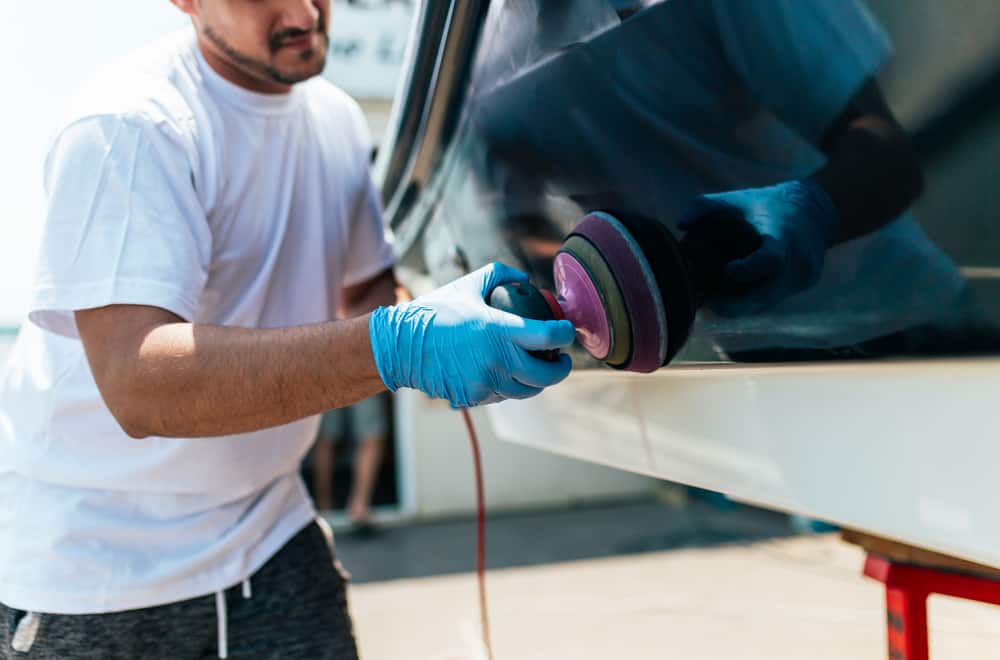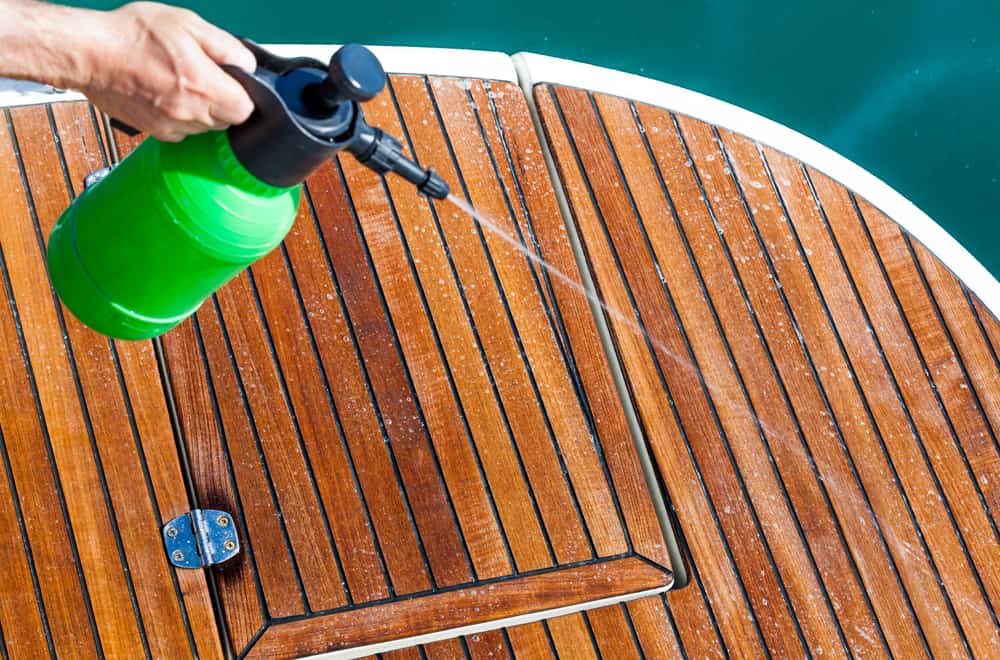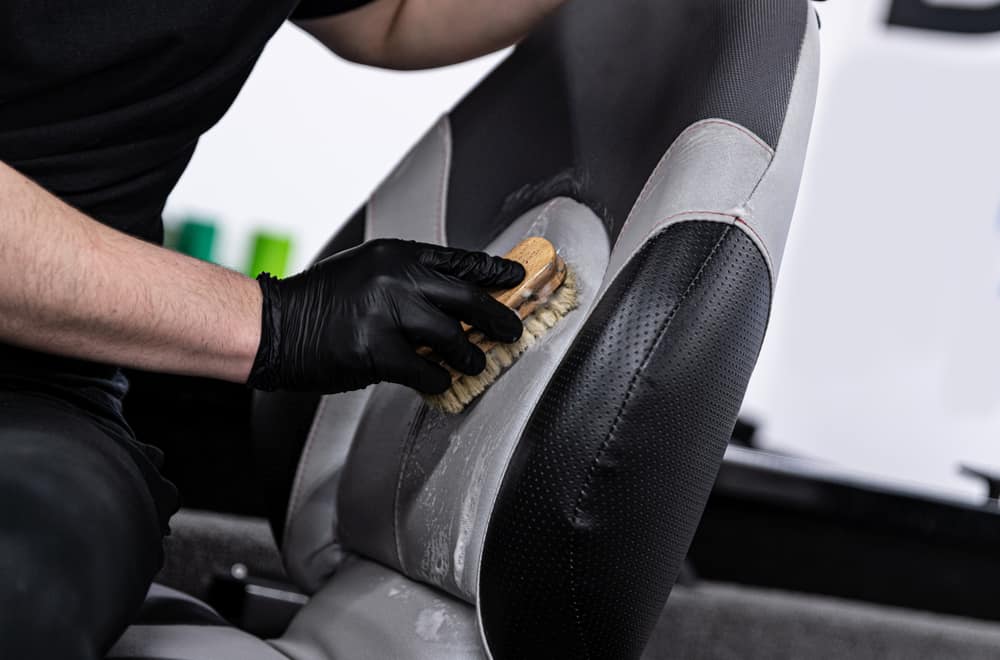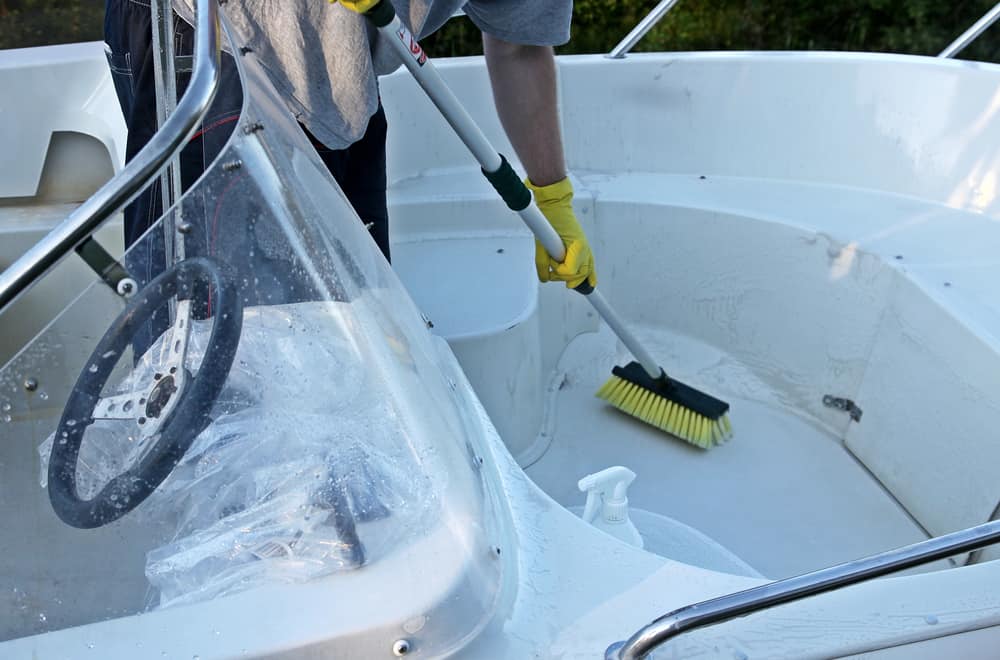If you are a new boat owner, cleaning your vessel is one of the basic skills you should learn.
Sure, you can give the job to professionals. But, if you want to save money and learn how to care for your watercraft, it helps to know how to clean a boat.
Boat cleaning might seem like an overwhelming task, especially if you are looking at a big boat. But, I promise you, you can pull this off and even have some fun at it. If you are cleaning a large watercraft, it is good to get a helping hand.
In this article, I will dish out some tips and tricks I have learned along the way from years of cleaning my own boats.
So, let’s dive in for some tips to clean a boat.
How To Clean A Boat
1. Use the correct cleaning products
It goes without saying that there are hundreds of cleaning products out there from which to choose. If you are new to boat cleaning, looking through all these products and selecting the right ones can be overwhelming.
Most boats are made of aluminum or fiberglass. When selecting a cleaning product, check that it is specifically designed for cleaning the material from which the hull is made. If you are cleaning an aluminum boat, use an aluminum boat cleaner and a fiberglass cleaner for a fiberglass boat.
Avoid cleaning your boat with household detergents; they might be too alkaline and end up burning the surface and stripping the top wax, leaving the hull looking worn out. Cleaning products specifically meant for boating have a neutral PH and are gentle on the boat’s surface.
Choose environment-friendly boat cleaning products. Toxic cleaners will easily foul waterways.
I strongly recommend opting for products with the Environmental Protection Agency’s Design for the Environment logo. The Environmental Protection Agency inspects these products to ensure they are not harmful to the environment.
2. Hose Down The Boat After Each Use
Hosing your boat after every use is one of the best ways to extend the lifespan of your watercraft. Regular hosing prevents salt and dirt build up, which can otherwise stain your vessel and ruin its appearance.
Importantly, you should rinse your boat after each use to prevent the effects of rust. If you use your boat in salty water, rust can be a nuisance and easily destroy your watercraft. Rinse your boat with fresh water to prevent rust caused by salty water.
3. Go easy with the soap
A big mistake new boat owners usually make is using too much soap when cleaning their vessel. It’s true that when a boat seems dirty all you want to do is apply as much soap and thoroughly scrub to get rid of the grime.
But, there is a big problem with using excess soap to clean a boat. Soap contains chemicals that can strip away the wax on your boat’s fiberglass, leaving it looking dull and prone to staining.
Too much soap will also stick to the fiberglass, leaving behind stubborn soap and salt stains that can ruin your boat’s appearance.
Lastly, applying too much soap only gives you extra work. It takes more time and effort, not to mention water to rinse off all that soap.
The point is, a little cleaning product goes a long way!
Have a bucket of clean water close by that you can use to rinse the sponge you use to clean the boat. This is a smart way to avoid spreading more soap all over the vessel and avoid scratching the fiberglass hull with dirt stuck to the sponge.
4. Apply boat wax quarterly
Waxing is an important part of the boat cleaning processing. Applying wax after cleaning and drying the boat protects the top gel coat from oxidation.
Oxidation results in a whitish finish that makes the fiberglass appear dull and unsightly. Oxidation can also weaken the fiberglass, making it prone to water intrusion.
I recommend waxing your boat every 3 to 6 months after cleaning the vessel thoroughly. Applying a high quality boat wax will leave your boat with an attractive, glossy finish.
If your boat’s gel coat is already dull and worn out, opt for a buffing compound instead. This compound is slightly abrasive compared to the smooth boat wax and will sand out any imperfections, leaving the fiberglass with a nice glossy finish.
5. Polish and protect wood and metal parts
Aside from fiberglass, wood and metal are the other materials in your boat that should be cleaned with utmost care.
Don’t use just any product to clean wooden parts. I recommend a high-quality, environment-friendly teak cleaner. Teak cleaners are specifically made to protect wood while gently removing stains and signs of oxidation.
A good teak cleaner will not scratch the wood or strip off the top wax. Instead, the wooden parts in your boat will remain shinny and clean.
After cleaning wooden parts, use teak oil to oil the wood. Teak oil acts like a sunscreen and will protect the wood from the effects of UV-rays, salty water, and grime that can quickly age the wood.
Next, you want to pay special attention to the metal parts on your boat; they are the most prone to rust and oxidation. Invest in a good stainless steel or metal polish. After cleaning your boat, apply this polish on the metal parts.
Take your time to coat the entire metal with the polish to prevent water intrusion and subsequent rust. Use the right product for the type of metal you have on your boat. If you have copper parts, use a copper polish and not a stainless steel one.
6. Remove stains and molding from seats
Boat seats can be a hot bed of bacteria, mildew, stains, and all sorts of grime. Fabric boat seats should be cleaned monthly especially if yours is a busy boat with passengers milling in regularly.
Remove the fabric seat covers and machine-wash them in cold water. Cleaning them in hot water to kill bacteria seems like a good idea but there is a serious risk of these covers shrinking. Cold water will still do the trick.
Remember to clean the cushion too. Baking soda, vinegar, and water are all you need to remove mildew and odor from the foam cushions.
Sprinkle some baking soda on the foam and allow it to sit for 5 to 10 hours. Shake off the baking soda and spray the mixture of half water and half vinegar. Allow the cushions to air dry for a couple of hours.
Rinse the cushions with a hose and let the dirty water flow out. Give the cushions several rinses until the water runs clear then allow them enough time to air dry. Once the cushions dry, dress them in their covers.
If you have vinyl seats, be sure to clean them after every trip out in the water. Salty water, sweat, and sunscreen can cause vinyl to deteriorate with time.
Wipe your boat seats with a vinyl cleaning compound. Avoid products containing bleach, alcohol, chlorine or ammonia as they can break down the vinyl itself and the stitching material. Vinyl cleaners are gentle but effective enough to remove grime from seats.
Wipe down the back, seat, and crevices on the chair where dirt might hide. Rinse the cleaning compound and dry the seats with a clean cloth.
7. Vacuum clean the carpet
Marine carpet is prone to dirt and debris. If not well cleaned, it can be a source of harmful bacteria and grime.
The first step to clean your marine carpet is to vacuum away lose debris. Pass the vacuum cleaner over every part of the boat covered in carpet including the cockpit and the boat head.
Often, vacuuming alone is not enough. When giving your boat a thorough cleaning, this is also a good time to scrub the interior carpet. Fresh water, soap, and a stiff-bristle brush will do the trick.
Ensure that the water from cleaning the carpets drains away to allow the carpet to dry completely. If yours is a small boat, you can position it on an incline to drain the water.
For large boats, use a wet vacuum to suck up the water. Running the air conditioning can also help dry up the boat’s interior.
8. Be gentle when cleaning the engine
Your inboard or outboard engine should be cleaned regularly. For outboard engines, wash the exterior surfaces with soap and water, and apply wax after every use. Remove stubborn grime with soft wash mitts or soft-bristle brushes; never use abrasive substances or tools to clean the engine’s exterior.
Take extra precaution when cleaning an inboard motor. It’s best to avoid using water and chemical cleaners and instead just wipe down the parts.
Get a professional for the job if you need to clean your engine thoroughly.
Summary: 8 Tips To Clean A Boat
Few things are as satisfying as admiring your sparkling boat and hoping onto it for a weekend treat out in the waters. Depending on your lifestyle and use, you should ideally clean your watercraft every 4 to 6 months to keep it in tip-top condition. Hosing it down after every use will go a long way in prolonging your boat’s lifespan. I hope these tips on how to clean a boat will help you keep your vessel tidy and in good shape.
